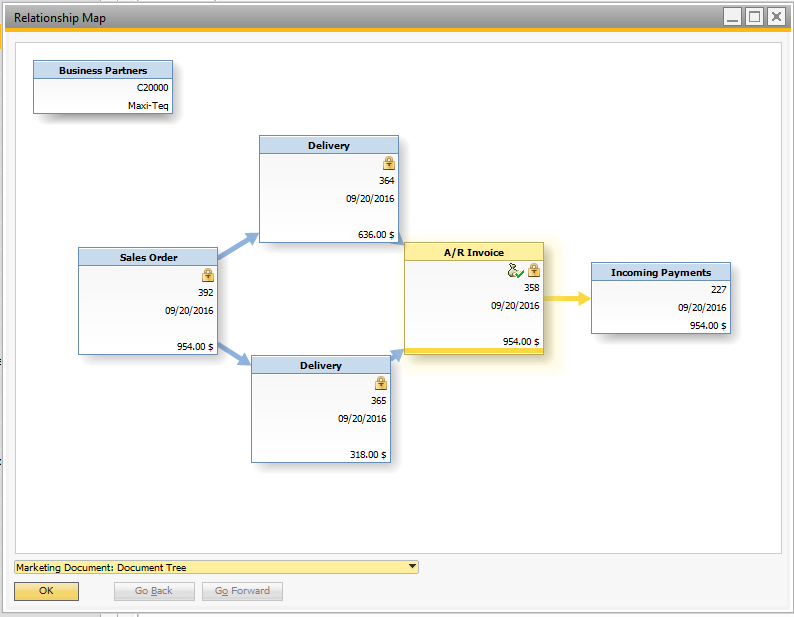Alternative 1 - Authorization at Delivery
To get around the issue with the large authorizations on the Sales Order one alternative is to authorize at the Delivery instead of the Sales Order.
You would still add the one-time Credit Card/Business Partner Credit Card at the Sales Order as this will create an (0.01) authorization to validate the Credit Card. This way you can still do the fraud check without authorizing the full amount on the Sales Order.
The benefit of doing the authorization when creating the delivery is that you get the split shipment authorized but you only authorize the amount that you are going to settle.
When the delivery is then copied to an A/R Invoice you settle the full authorization and you only hold the money that you are going to settle on the customers Credit Card.
An alternative is to only authorize the amount expected in the first shipment on the Sales Order. This way you will get some security without reserving more funds than required to process the first delivery. This is a manual process and the person creating the sales order need to know what the expected first shipment amount will be.
Note: It is important that the A/R Invoice amount is the same or less than the Delivery as otherwise iPayment will need to create a new settlement as the authorization cannot be used. This would lead to the same issues as outlined in the "Handling large authorizations and split shipments" chapter.
Alternative 2 - One A/R Invoice
One alternative is to always settle using one A/R Invoice instead of multiple A/R Invoices.

This way you will use the authorization from the Sales Order to settle the A/R Invoice leading to only settling one transaction instead of multiple.
This can be achieved using the Copy from functionality in SAP where you settle all the Deliveries that is created from the Sales Order.
It is important that the A/R Invoice amount is the same or less than the Sales Order as otherwise iPayment will need to create a new settlement as the authorization cannot be used. This would lead to the same issues as outlined in the "Handling large authorizations and split shipments" chapter.
Alternative 3 - Only ship every 10 days
An authorization normally expires after 10 days so only shipping every 10 days would allow for the settled authorization to expire before the next settlement is done.
You can get the specific expiration time for the authorization by contacting the gateway.
Alternative 4 - A/R Reserve Invoice
When creating the A/R Reserve Invoice document you can settle it using iPayment for the full amount.
You can then close the A/R Reserve Invoice using one or more Delivery documents when the delivery has been made.